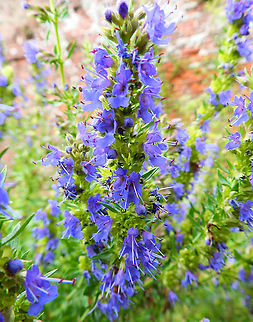
Appearance
Hyssop is a brightly coloured shrub or subshrub that ranges from 30 to 60 cm in height. The stem is woody at the base, from which grow a number of upright branches. Its leaves are lanceolate, dark green, and from 2 to 2.5 cm long.During the summer, hyssop produces pink, blue, or, more rarely, white fragrant flowers. These give rise to small oblong tetra-achenes.
Evolution
A plant called hyssop has been in use since classical antiquity. Its name is a direct adaptation from the Greek ὕσσωπος . The Hebrew word אזוב and the Greek word ὕσσωπος probably share a common origin. The name hyssop appears as a translation of ''ezov'' in some translations of the Bible, notably in Psalms 51:7: "Purge me with hyssop, and I shall be clean", but researchers have suggested that the Biblical accounts refer not to the plant currently known as hyssop but rather to one of a number of different herbs, including ''Origanum syriacum'' . 1 Kings 4:33 mentions that 'ezov' was a small plant and some scholars believe it was a wall plant. It was burned with the Red Heifer and used for purification of lepers , and at Passover it was used to sprinkle the blood of the sacrificial lamb on the doorposts . A sponge attached to a hyssop branch was used to give Jesus on the cross a drink of vinegar.Suggestions abound for the modern day correlation of biblical hyssop ranging from a wall plant like moss or fern, to widely used culinary herbs like thyme, rosemary or marjoram. Another suggestion is the caper plant which is known to grow in the rocky soils of the region and along walls.
Hyssop was also used for purgation in Egypt, where, according to Chaeremon the Stoic, the priests used to eat it with bread in order to purify this type of food and make it suitable for their austere diet.
References:
Some text fragments are auto parsed from Wikipedia.